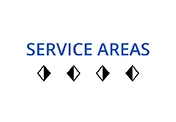Roof Replacement Is In Demand With The Rain Amounts In Northern Virginia
Most people, when asked what the most important part of their home is, would respond with the foundation, the walls or perhaps the interior; all very important, but the roof is probably top of the list (no pun intended). The roof not only keeps the elements out, it protects the walls and foundation from internal water damage. Here are a few of the main causes of roof damage and why it’s so important to have regular roof checks.
Northern Virginia Roof Maintenance
When we think about maintenance for our homes few of us think about the roof until there’s a problem. And when a problem arises, not many homeowners are going to venture up a ladder or climb out of a skylight to check our roof’s condition. It’s a specialized job, and there are many good reasons to get a regular maintenance check on your roof, especially when seasons of inclement weather approach. Roofing jobs can be expensive, but with regular roof checks, the chance of bigger, more expensive, surprise repairs will be reduced. This is a good way to spot loose tiles or slates, gutter or flashing damage. Even a small amount of roof damage allows in rain, which can cause serious harm to the roof’s structure and interior walls which could result to major damage.
Northern Virginia Roof Wear and Tear
On the East Coast we enjoy the four seasons, however, like anything that is exposed to changing elements, roofs suffer wear and tear from natural causes. Wind, rain, hail, ice, snow, and sunlight all affect roofing materials differently. Hail is particularly damaging, acid or polluted rain can cause erosion, and houses close to industrial areas are susceptible to damage from air pollution.
In the summer season, excessive heat and UV rays from sunlight can cause roofs, especially wooden, to deteriorate. Some roof tiles have a UV protective coating, but over time this erodes, and further UV ray exposure coupled with heat will dry out and weakens the tiles.
During the Spring and Fall seasons’ when the weather is mild roofs can still sustain damage. Falling objects from nearby buildings, birds and small animals, and falling branches from trees can cause minor damage.
In the winter season, melting and freezing snow on roofs causes what is known as an “ice dam” which causes reservoirs of water to seep under tiles leading to serious damage underneath the surface. Roofs are especially prone to wind damage during all four seasons. Aside from blowing off loose or broken roof tiles, high winds cause changes in air pressure in and around the roof, lifting off tiles, ridging and flashing.











